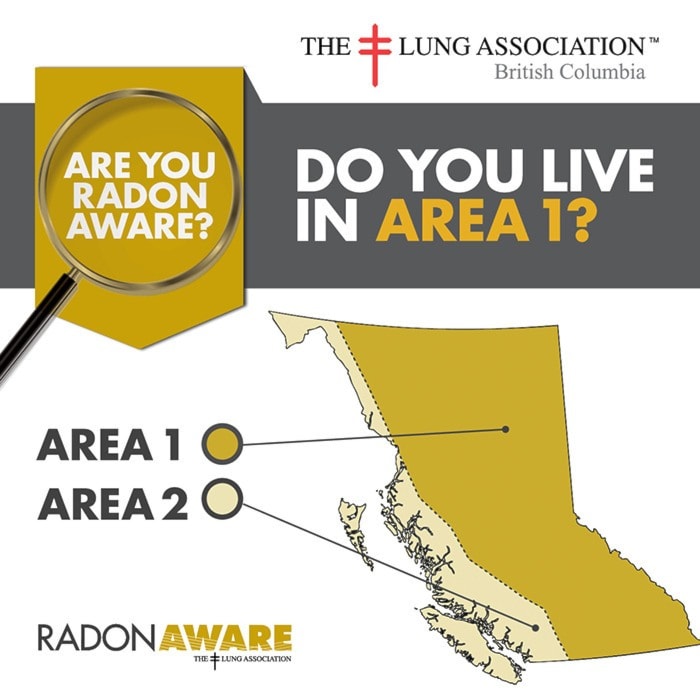When Castlegar native, Joan Blain, first heard about the BC Lung Association’s Home Radon Testing Study, she jumped at the opportunity to take part.
Unlike most British Columbians, Blain had heard about radon. She knew it was a leading cause of lung cancer and that Castlegar was known to have elevated levels. So she suspected there was a good chance her home may test above the Health Canada safety guidelines of 200 Bq/m3.
“I was right,” explained Blain. “The level of radon in my home was 600 Bq/m3 – three times the health guideline. When I found out I wasted no time getting in contact with local contractors who connected me with Paul Muntak, a Certified Radon Mitigation Professional.”
Soon after Blain called, Muntak could be found installing a radon mitigation system in her home. Muntak is an experienced professional who works in the Castlegar area and has been providing radon measurement and mitigation services for years.
“In most cases it’s fairly easy to lower indoor radon concentrations,” said Muntak. “I start by doing an assessment to determine how radon is entering the home and seal any cracks. Next, depending on whether or not a homeowner’s radon tests are high, we’ll discuss the installation of a radon mitigation (specialized venting) system which typically costs between $500 and $3,000.”
Blain believes the expense is well worth it for peace of mind, “Once the system was installed and working I immediately felt relieved and confident I was doing the right thing by taking steps to minimize my family’s risk of lung cancer.”
“Within days after my radon system was installed a short-term test confirmed my home’s radon levels had already dropped below Health Canada’s safety guideline of 200 Bq/m3,” said Blain. “And as Paul Muntak suggests, I’ll do a longer term test in a few months just to be sure the mitigation system continues to work effectively.”
On average, more Canadians are estimated to die every year from radon-induced lung cancer than deaths by vehicle accidents, fire exposure, and drowning combined.
About the BC Lung Association’s Castlegar Radon Study
The BC Lung Association conducted two of Canada’s largest-ever community-wide home radon testing studies in 2014. One was conducted in Castlegar, in partnership with the City, and the other in Prince George, two BC communities where radon levels are known to be elevated.
“We distributed free home radon test kits to thousands of interested homeowners,” said Britt Swoveland, the BC Lung Association’s RadonAware Program Manager. “And now that participants have their results, we’re contacting those with unsafe radon levels and urging them to take action to minimize their lung cancer risk, beginning by contacting a certified radon professional.”
Phil Markin agrees.
“High indoor radon levels are a serious public health issue. Radon is Canadian’s biggest source of radiation exposure and the leading cause of lung cancer after smoking - and we all know lung cancer is deadly,” said the Building Services Director for the City of Castlegar.
“Unfortunately for many homeowners in the Castlegar area, indoor radon levels are a problem. That’s why we encourage all homeowners to test, and those who test high to take radon reduction measures,” added Markin. “Solving a radon problem is not difficult, and it’s not a reason to panic – but it is a reason to act.”
To learn more about how to test and fix home radon problems visit the BC Lung Association’s RadonAware.ca website.
